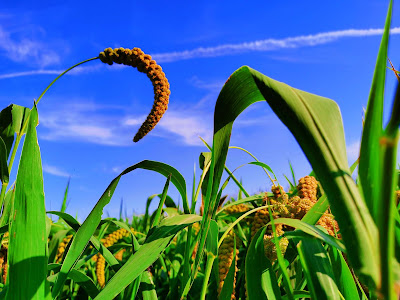Middle Autumn Festival, which in Chinese is 中秋节, is coming. It is one of the most important seasons Chinese families unite together to celebrate with mooncakes, lanterns and word puzzle games.
Looking at 秋, it is composed of 禾 and 火. We have learnt that 火 is a Pictogram character of fire at https://xiongzou.blogspot.com/2016/02/learn-one-chinese-character-day_4.html. Today we proceed to learn what 禾 means.
If you have learnt with us what 木 represents, and it is used as part of 秋, which means Autumn, you might wondering 禾 was drawing of low hanging tree branches full of fruits. It is close. Evolution history of 禾 will tell you the correct answer:
 |
| evolution history of 禾 |
From its Oracle script
 |
| 禾 |
That is all for 禾, time to enjoy a Chinese calligraphy with 禾 inside:
 |
| 锄禾日当午,汗滴禾下土; 谁知盘中餐,粒粒皆幸苦。 |




